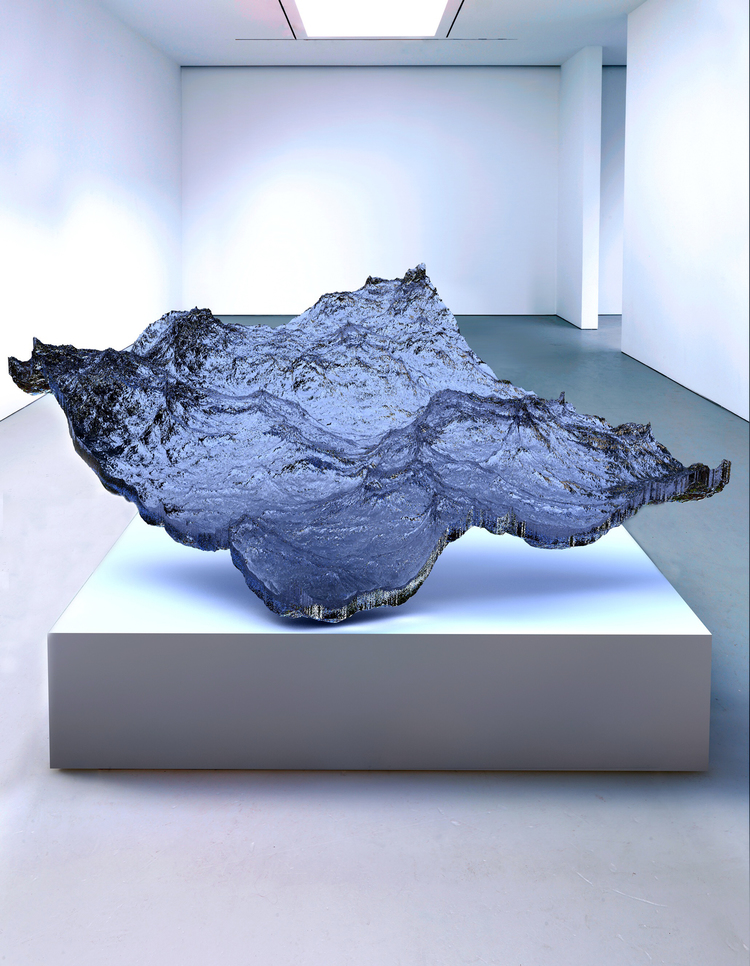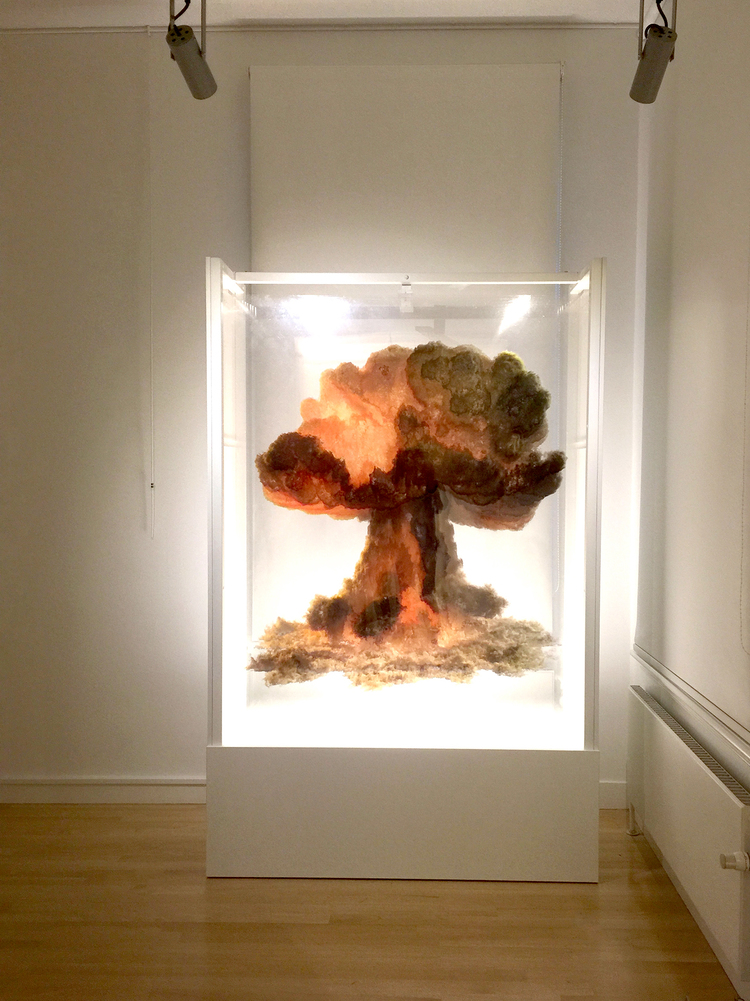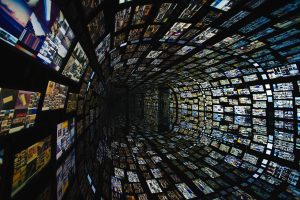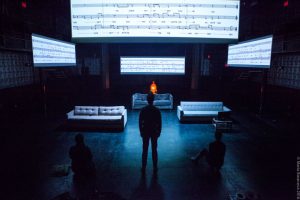Waterfall

Piece of Ocean

Nuclear Explosion (2012)

Eyal Gever is a contemporary artist studying the fusion of art and technology through the translation of digital simulations to static physical artifacts. He and his team first use programming and complex physics modeling to develop realistic 3-dimensional animations of situations that occur in real life; they then freeze each simulation at a particular moment in time and use 3D printing to bring the situation back into the physical world. The phenomena that Gever chooses to depict and the way in which he freezes them often create a sense of suspense or wonder.
Aside from the shear feat of digitally reproducing complex real-world phenomena, what I find most interesting about Gever’s work is the way in which he captures a specific moment in time that, in the realm of everyday life, passes us by. His selection of the moment and the material/medium he chooses to represent the moment physically causes us to reinterpret the phenomenon and look at our physical world differently thereafter. I find this inspiring and authentic.
Gever’s work is very singular at the moment. Each work follows a similar process of studying a single phenomenon and representing that phenomenon digitally and physically. What I think would add a level of complexity to Gever’s work is if he were to use his digital simulation mastery to begin to create clashes between phenomena, especially if they are situations don’t occur in the real world. This, I think, would yield unexpected results and, again, cause witnesses to reinterpret their physical world.
![[OLD – FALL 2016] 15-104 • COMPUTING for CREATIVE PRACTICE](https://courses.ideate.cmu.edu/15-104/f2016/wp-content/uploads/2020/08/stop-banner.png)





